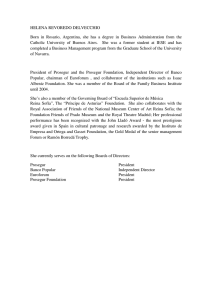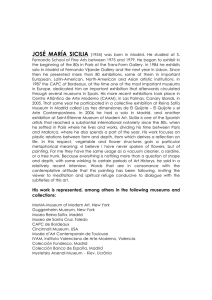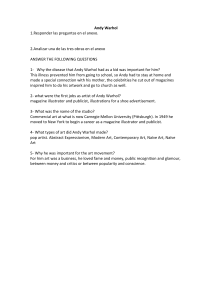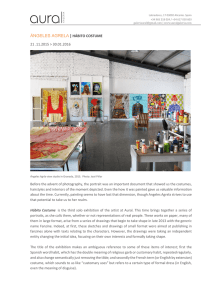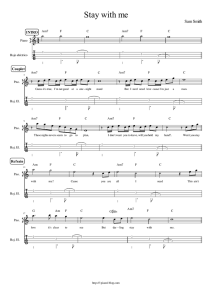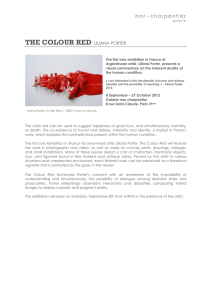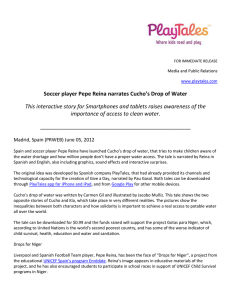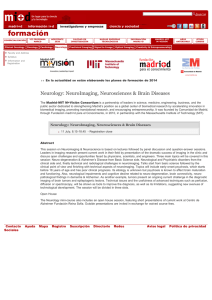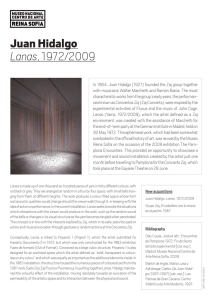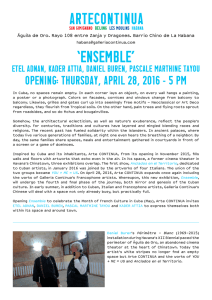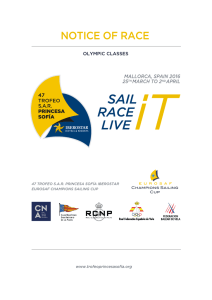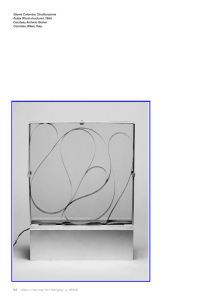I Am Also not a Book
Anuncio
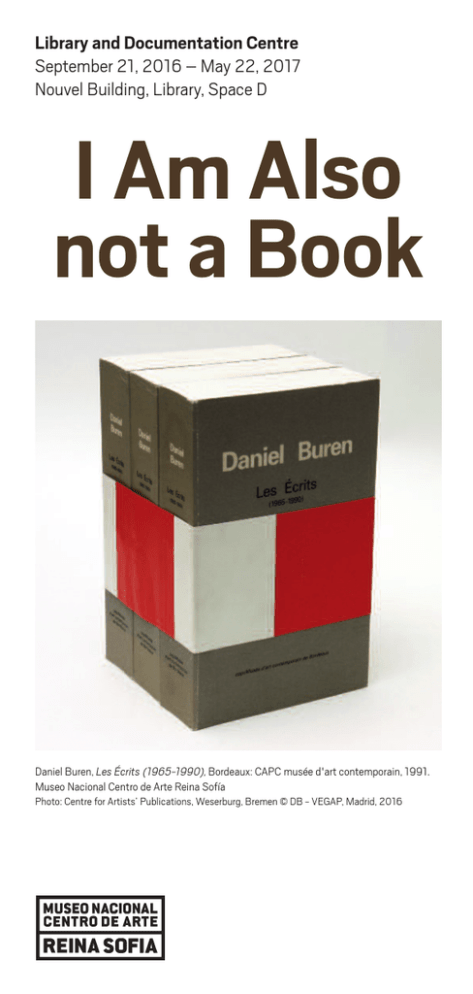
Library and Documentation Centre September 21, 2016 – May 22, 2017 Nouvel Building, Library, Space D I Am Also not a Book Daniel Buren, Les Écrits (1965-1990), Bordeaux: CAPC musée d'art contemporain, 1991. Museo Nacional Centro de Arte Reina Sofía Photo: Centre for Artists’ Publications, Weserburg, Bremen © DB - VEGAP, Madrid, 2016 I Am Also not a Book I Am Also not a Book is the title of the last part of a trilogy of exhibitions which includes It is not new, it is a book (from September, 2014 to May, 2015) and I call them simply books (from May to October, 2015). On this occasion, the title refers to the 1973 work by John M. Belis, I Am Also not a Book, which consists of a card with the sentence “Attach this card to any book-type object and it will become a genuine John M. Belis,” and which can indeed be affixed to any book-shaped object. Altogether, the three parts, curated by Guy Schraenen, provide an overview of the main investigative fields within the universe of artists’ books. While part one dealt with the tautological notion of the artist’s book, and part two reflected on the artist’s book as an artwork in its own right, equivalent to a painting or a sculpture, part three focuses on works that exist at the interface between a book and an object. In the past, artists and writers had already created book works that escaped from the traditional form, material, and concept of a book. Sonia Delaunay and Blaise Cendrars’s collaborative book project La Prose du Transsibérien et de la Petite Jehanne de France [Prose of the Trans-Siberian and of Little Jehanne of France, 1913], is at first sight a normal book, but it unfolds into a twometer vertical leporello, an early example of a deliberate use of the book format, along with its typography and images. Lucio Fontana created his accordion-fold book Concetto spaziale [Spatial Concept, 1966], out of perforated gold foil. In 1961, the writer Raymond Queneau published Cent mille milliards de poèmes [One Hundred Thousand Billion Poems], included in this exhibition, in which by printing each sentence on a separate strip lines can be endlessly combined to compose new poems. For these chosen books, the appearance, content, or aim of the conventional book is used as a model for a transformation into a new representation, similar to, for example, when a body is taken as the model for a painting September 21, 2016 – May 22, 2017 or a sculpture. Sometimes the model is recognizable, sometimes it is subverted. The possibilities of mutating the book range from a single page by Jiří Valoch to a large concrete block by Wolf Vostell. The gold leaf-covered book by Jean-Pierre Benon only refers to the image of the book as a religious and/or status symbol. It is treated in order to become a monolithic object from which the letters emerge. Mariana Castillo Deball’s work Never Odd or Even is a compilation of book covers of different sizes by various participants in her project. James Lee Byars’s two books are examples of contrasting appearance: the book Devil consists of nothing but a red cover with a long red string inside; and GOLD DUST IS MY EX LIBRIS, also known as “The Cube Book,” consists of approximately nine hundred pages in the shape of a cubic mass. On display are three works by Robert Filliou: the circular book Petite histoire un peu sainte [Small story a little saint], bound by a copper ring; the firebrick Je meurs trop [I’m dying too much], referring to formal aspects of a book; and the mini-leporello Livre-étalon / StandardBook, which allows all literature to be objectively evaluated by measuring it with this book. All create a distance from the reader’s habitual relationship with the book by transforming its form and material. Flower Arrangement for Bruce Nauman by Dennis Oppenheim takes the form of a leporello. Enrico Baj conceived an oversized book that he called The Biggest Art Book of the World. Inside the book there is a hollow that encases a puzzle of sixteen colorful illustrated cubes. The reader/viewer who follows Baj’s instruction “Do it baj yourself” can create an infinite number of images. Les Écrits (1965-1990) [The Writings (1965-1990)] by Daniel Buren seems to be a banal publication of collected writings. But by packing the three volumes into a banderole that carries his “visual tools,” the 8.7centimeter-wide vertical stripes, in this case red and white, the work becomes an example of the extended language of this visual artist who entangles his intellectual ideas and his visual language to the point of indistinguishability. I Am Also not a Book Andy Warhol, Andy Warhol's Index (Book), New York: Random House, 1967. Museo Nacional Centro de Arte Reina Sofía © The Andy Warhol Foundation for the Visual Arts, Inc./VEGAP, Madrid, 2016 In all the exhibited books or objects, the use of understandable language is abandoned in favor of the visual form. By destroying the ordinary aspect of the book, the artists do not destroy the idea of the book; rather they draw attention to the myths about the author and the book as a tool of the powers that be. September 21, 2016 – May 22, 2017 Artists: Enrico Baj, John M. Belis, Jean-Pierre Benon, Daniel Buren, James Lee Byars, Augusto de Campos, Mariana Castillo Deball, Ricardo Cristóbal, Robert Filliou, Axel Heibel, Dietrich Helms, George Maciunas, François Morellet, Marie Orensanz, Dennis Oppenheim, Francisco Pino, Julio Plaza, Raymond Queneau, Dieter Roth, Paul Sharits, Daniel Spoerri, Shohachiro Takahashi, Antoni Tàpies, José-Miguel Ullán, Jiří Valoch, Wolf Vostell, Andy Warhol Museo Nacional Centro de Arte Reina Sofía Nouvel Building Ronda de Atocha s/n 28012 Madrid Library opening hours Monday to Friday from 10:00 a.m. to 9:00 p.m. Except holidays Tel. (34) 91 774 10 00 The exhibition room will be vacated 15 minutes before closing time www.museoreinasofia.es Tel. (34) 91 774 10 27 GOBIERNO DE ESPAÑA MINISTERIO DE EDUCACIÓN, CULTURA Y DEPORTE NIPO: 036-16-009-2 L. D..: M-29825-2016 Library
